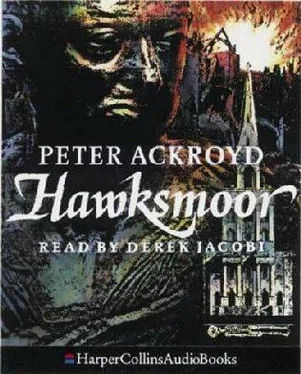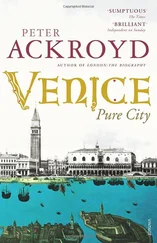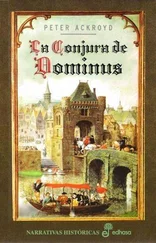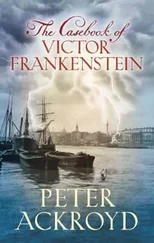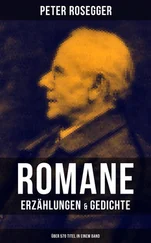And now, as the car moved into Cheapside and then Poultry, its siren echoing through the streets of the city, Hawksmoor was able to concentrate upon the objects for which he would soon be searching fibres, hair, ash, burnt paper and perhaps even a weapon (although he knew that no weapon would in fact be found). On an occasion such as this, he liked to consider himself as a scientist, or even as a scholar, since it was from close observation and rational deduction that he came to a proper understanding of each case; he prided himself on his acquaintance with chemistry, anatomy and even mathematics since it was these disciplines which helped him to resolve situations at which others trembled. For he knew that even during extreme events the laws of cause and effect still operated; he could fathom the mind of a murderer, for example, from a close study of the footprints which he left behind -not, it would seem, by any act of sympathy but rather from the principles of reason and of method. Given that the normal male tread is twenty eight inches, Hawksmoor had calculated that a hurried step was some thirty six inches, and a running gait some forty inches. On these objective grounds, he was able to deduce panic, flight, horror or shame; and by understanding them, he could control them. All of these matters occupied his attention, as he drove towards St Mary Woolnoth, so that he might conceal from himself his rising excitement at the thought of viewing the body and for the first time entering the crime.
But when he came to the corner of Lombard Street and King William Street, he saw at once that a policeman was holding up a white sheet while a photographer was preparing his camera. 'Don't!' he shouted as he quickly left the car, 'Don't do anything yet! Just move out of the light!' and he gestured them away from the steps of St Mary Woolnoth. He did not glance at the body, however, but stopped on the pavement in front of the iron gates and looked up at the church: he saw a curved window, with pieces of glass as thick and dark as pebbles, and then above it three smaller square windows which gleamed in the autumn light. The bricks around them were cracked and discoloured, as if they had been licked by flame, and as Hawks- moor's gaze crept upward six broken pillars were transformed into two thick towers which seemed to him like the prongs of a fork which impaled the church to the earth. Only now did he look at the corpse of the dead boy which lay along the fourth of eight steps and, as he opened the gates and approached it, certain complicated thoughts disturbed his calm. Even though there was a slight dawn rain, he took off his dark coat and placed it on top of some polythene sheets which had already been laid down.
The boy looked as if he had opened his eyes wide in mock terror, perhaps trying to frighten some other children during a party game, but at the same time his mouth was gaping open in what might have been a yawn. The eyes were still bright, before the muscles relaxed into the dull and fixed stare of eternal repose, and the gaze of the child disconcerted Hawksmoor. He called for a roll of adhesive tape used in collecting evidence; bending over the corpse, he placed a piece of the tape against the neck: he could smell the body as he leaned towards it, and through the tape his fingers could touch it. Yet as he felt the neck he was compelled to look away and he stared up towards a stone tablet on which was inscribed, 'Founded In the Saxon Age and Last Rebuilt by Nicholas Dyer, 1714'. The passage of time had partly erased the letters, and in any case Hawksmoor made no effort to understand them. He got up quickly: his sweat might look like rain, he thought, as he handed the adhesive tape to the police officer. 'There is nothing on the neck,' he told him. Then he climbed up the last four steps and entered the silent church; it was in darkness still, and he realised that the windows only reflected the light, like a mirror. Glancing behind to make sure that no one could see him, he approached the baptismal font in a corner, cupped his hands in its stale water, and rubbed them over his face.
The young officer came up to him as he left the church and murmured, 'She found him. She stayed here until she saw a copper' he was nodding towards a red-headed woman who was sitting on an old stone just within the gates. Hawksmoor apparently paid no attention to her, and looked up at the side of the church facing King William Street: 'What is this scaffolding here for?'
'It's for the excavations, sir. They're excavating here.'
Hawksmoor said nothing. Then he turned back to face the officer: 'Have you made a note of the weather conditions?'
'It's raining, sir.'
'I know it's raining. But I want the precise temperature. I want to see how the body cools.' He looked up at the sky and the rain fell down upon him, over his cheeks and across his open eyes as he stared upwards.
The area had already been cordoned off at his instructions; large canvas screens had been placed around the gates and sides of the church to conceal the police operation from the gaze of those people who would inevitably congregate at the spot where a murder had been committed. Now that Hawksmoor was satisfied that he had staked out the right territory, with the body at its centre, he took charge of the operation in all of its aspects. More adhesive tape was used on the trousers, socks, sweater and shirt of the victim; soil was taken from his shoes, together with control specimens of the earth close at hand, and the shoes were then placed in a polythene bag. The body was now stripped under the arc-lights, so that it acquired a bright pallor, and each item of clothing put in a separate bag which Hawksmoor insisted on labelling himself and then handing to the exhibits officer. Nail-scrapings were taken, before the hands were bagged and then sealed with tape. At the same time, the ground was being searched for fibres, footprints or smears: anything of even remote interest to the investigating team was given a serial number, registered in a master-log, and then deposited in a padded transit box.
Throughout these activities Hawksmoor, still without his overcoat despite the steady light rain, kept up a low whispering; it would have appeared to anyone who knew nothing of police procedure that this man had gone entirely mad, and was talking to himself within two feet of a corpse, but in fact Hawksmoor was reciting his own observations into a small tape-recorder.
His last comment was, 'Nothing else here', when the pathologist arrived; he was a small, corpulent man who nevertheless conveyed a certain air of stateliness as he slowly climbed the steps of St Mary Woolnoth. He nodded to Hawksmoor and then, murmuring 'Yes, I see the body', he knelt down beside the corpse and opened a small brown bag. For a moment he paused, his fingers quivering.
'I'm sorry to get you up so early,' Hawksmoor was saying but he had already taken out his knife and with one rapid movement had cut through the abdomen; he now placed a thermometer beside the liver of the dead child and then leaned back to survey his handiwork. Then, whistling almost imperceptibly, he stood up in order to talk to Hawksmoor.
'You hardly need me to tell you, do you, superintendent?'
'I do, sir, thank you very much. Eventually I need you to tell me the time.'
'Ah well, time waits for no man.' He stepped back and looked at the broken pillars. 'It's a fine church, isn't it, superintendent? They don't build them like that any more…'His voice trailed off as his attention was once more drawn to the body.
'I don't know who "they" are, Sir.' But he was already down on his knees, blinking as the arc-lights were suddenly turned off. They were somehow embarrassed in each other's company and, as the pathologist waited to take a second reading of the temperature, Hawksmoor walked behind the canvas screens and across the street to Poultry. From the corner there, he could see the front of the church entire: he had passed it before but he had never looked at it, and now it seemed startlingly incongruous in its setting despite the fact that other buildings so pressed in upon it that it was almost concealed. He imagined that very few who passed its walls realised that they were the walls of a church and as a result the building, massive through it was, had managed to disappear from sight. And even for him it was only now, after this death, that it emerged with the clarity and definition which it must have possessed for those who looked upon it when it was first built. Hawksmoor had often noticed how, in the moments when he first came upon a corpse, all the objects around it wavered for an instant and became unreal -the trees which rose above a body hidden in woodland, the movement of the river which had washed a body onto its banks, the cars or hedges in a suburban street where a murderer had left a victim, all of these things seemed at such times to be suddenly drained of meaning like an hallucination. But this church had grown larger and more distinct in the face of death.
Читать дальше
